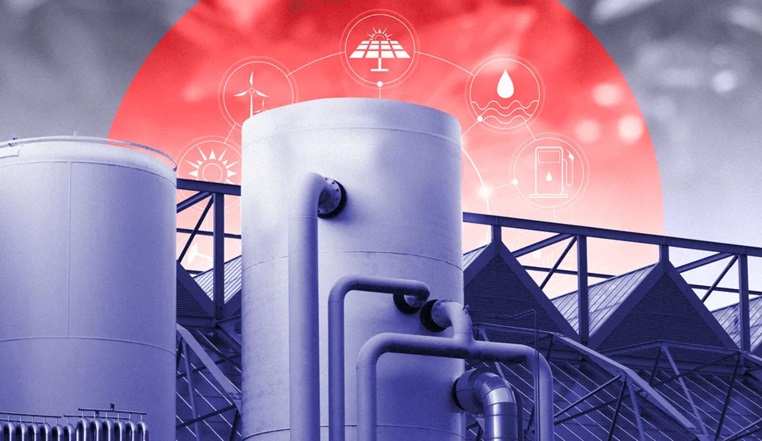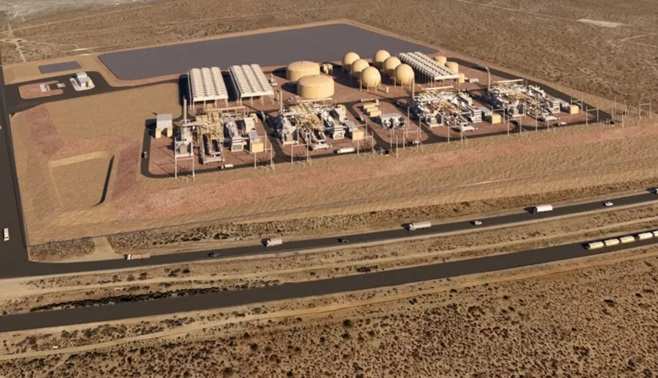Hydrostor’s GEM A-CAES: A Game-Changer for Energy Storage in California
Hydrostor innovative compressed air energy storage (CAES) system, known as GEM A-CAES, has just received a conditional loan guarantee of up to $1.76 billion from the U.S. Department of Energy (DOE). This funding is set to kickstart the development of the Willow Rock Energy Storage Center in Eastern Kern County, California, marking a significant milestone for renewable energy storage in the United States.

Once complete, Willow Rock will add 500 megawatts (MW) and 4,000 megawatt-hours (MWh) of long-duration energy storage (LDES) to Southern California’s power grid. The project promises to help lower energy costs, boost grid reliability during peak demand periods, and expand the integration of renewable energy sources like wind and solar. So, what exactly is compressed air energy storage, and what makes Willow Rock’s approach so special? Let’s take a deeper look.
What is Compressed Air Energy Storage (CAES)?
At its core, CAES technology is designed to store energy for later use, especially during times when renewable sources like the sun or wind aren’t producing energy. Here’s a simplified breakdown of how it works:
- Storing energy: When there’s surplus energy—typically from renewable sources like wind and solar—the system uses that energy to compress air and store it in underground caverns. This energy is stored as compressed air, ready to be used when needed.
- Releasing energy: When the grid needs power, the compressed air is released and passes through a turbine to generate electricity. The Willow Rock system will be able to provide full power for up to eight hours at a time, making it ideal for long-duration energy storage.
The beauty of CAES is its scalability. Unlike conventional batteries, CAES systems can expand based on the size of the storage cavern, and they don’t rely on scarce critical materials. Plus, CAES systems like Willow Rock are designed to last for more than 50 years, offering a durable and sustainable solution for long-term energy storage.
Advanced CAES: The Willow Rock Difference
While traditional CAES systems are effective, they come with a couple of major challenges: wasted heat and inconsistent power output. That’s where Willow Rock’s A-CAES system stands apart from the rest. Here’s how it overcomes these hurdles:
- Thermal energy capture: In conventional CAES, up to 50% of the energy is lost during the air compression process due to wasted heat. Willow Rock’s A-CAES system addresses this by pairing a proprietary thermal storage system with the compression process. This allows it to capture, store, and reuse the heat, making the system more energy-efficient.
- Consistent pressure: Traditional CAES systems can lose efficiency as the air pressure inside the underground cavern drops over time. Willow Rock solves this problem by using water from an above-ground reservoir to maintain consistent pressure throughout the storage and release process. Additionally, the system captures condensed water during the compression cycle, making the facility a net producer of fresh water—a unique benefit of this technology.

Why It Matters: Unlocking New Potential
What makes Willow Rock’s A-CAES so exciting is its ability to operate in a wide variety of underground conditions. While traditional CAES systems require specific geological conditions, the A-CAES design is so adaptable that it could work in 80% of U.S. geology. This opens the door for widespread deployment of the technology across the country, potentially revolutionizing energy storage.
This cutting-edge storage system will also create significant economic benefits. At its peak, the Willow Rock project will generate up to 700 construction jobs, with 40 full-time operations roles to follow once it’s operational. These positions require skills that are similar to those used in the oil and gas industry, making Kern County, a region with deep ties to fossil fuel production, a natural fit for this project.
The success of Willow Rock will pave the way for the broader rollout of long-duration energy storage solutions across the United States. By integrating renewable energy into the grid more efficiently, this technology can help lower energy costs, reduce reliance on fossil fuels, and improve the resilience of the nation’s power infrastructure. Plus, with the added bonus of freshwater production, the project represents a sustainable step forward in addressing not just energy needs but also water scarcity challenges.
Hydrostor’s GEM A-CAES and the Willow Rock Energy Storage Center are poised to change the landscape of energy storage and renewable energy integration. With its unique features, scalability, and impressive potential for widespread deployment, this project is an exciting glimpse into the future of energy.
Related Post
- New DOE Report Say America Recycle 90% of Wind Turbine materials
- Equinor Secures USD 3 Billion for New York City’s First Offshore Wind Farm
- New solid-electrolyte battery promises to triple the range of electric cars